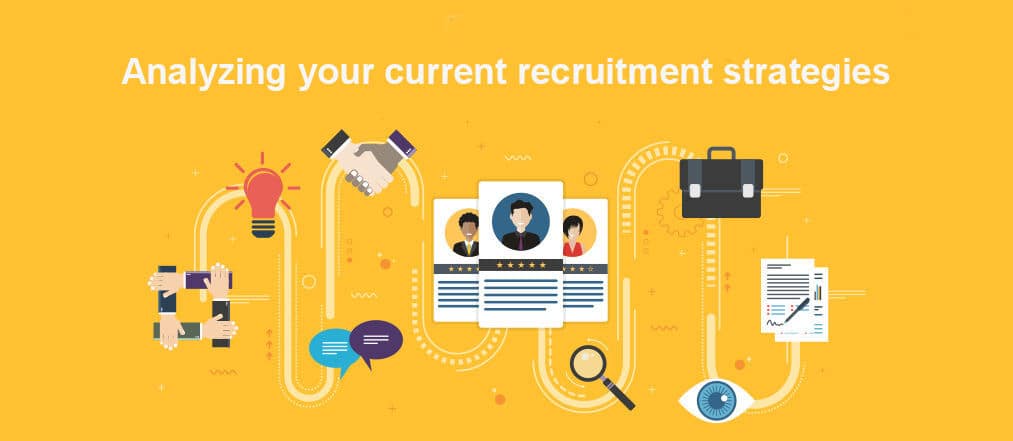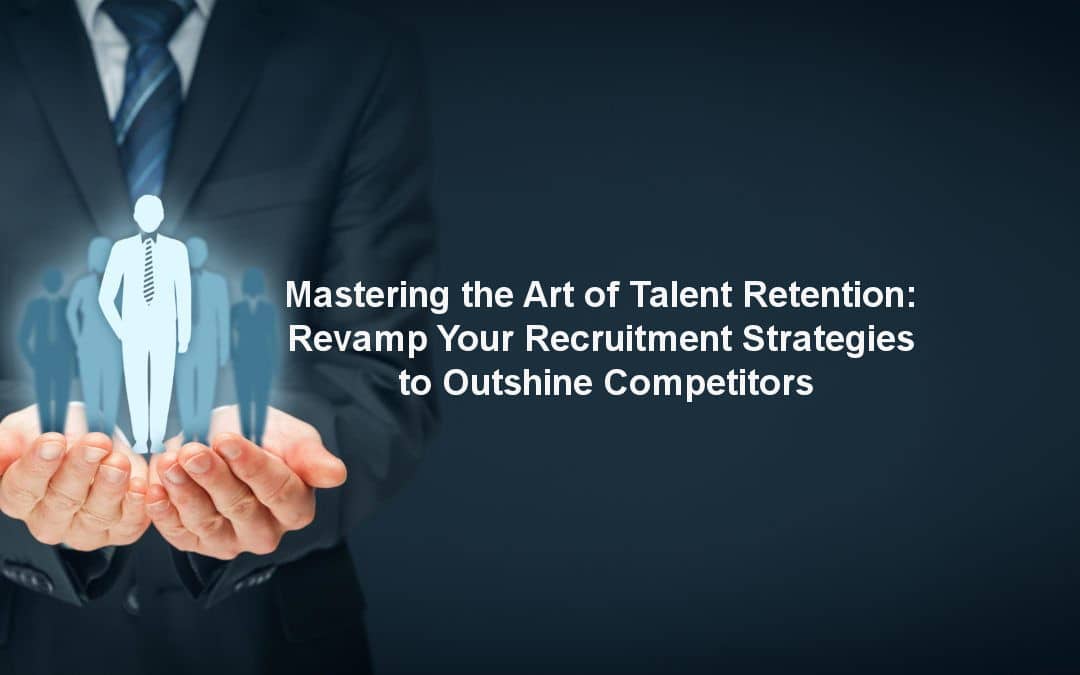In today’s competitive business environment, retaining top talent is crucial for organizations striving to maintain a leading edge. It’s common knowledge that attracting skilled employees is just the beginning. The real test lies in retaining them. This is where improving your hiring strategies becomes essential.
Mastering the skill of talent retention calls for a fresh perspective and an awareness of what truly motivates employees to remain loyal to a company. From initiatives for employee growth to accommodating work life balance, companies that prioritize their employees needs and ambitions effectively cultivate a workplace culture that fosters loyalty and lasting dedication.
In this article we delve into key approaches that can aid your organization not only in attracting but also retaining exceptional talent. We’ll discuss how aligning your hiring process with your organizational values, nurturing a positive company ethos and providing competitive compensation packages can significantly impact reducing turnover rates and enhancing employee contentment.
By incorporating these refined hiring tactics, you’ll not only outshine your rivals but also establish an enticing work atmosphere that draws in and retains top notch talent in the field. Let’s embark on the journey toward mastering talent retention!
Understanding talent retention
Keeping valuable employees engaged and motivated is crucial for the success of any company. In today’s competitive job market organizations are prioritizing talent retention to ensure skilled professionals remain committed to their long-term goals. Effective strategies not only help maintain a stable workforce but also drive growth and development.
When employees feel appreciated and aligned with the company’s mission, they tend to stay longer, boosting productivity and enhancing customer service. However, retaining talent requires a tailored approach that considers factors like compensation, career advancement opportunities, work culture and work life balance. By addressing these aspects thoughtfully, companies can cultivate lasting employee loyalty and engagement.
The cost of employee turnover

The financial implications of employee turnover can be quite substantial for companies, encompassing both direct and indirect costs. Direct costs involve the expenses related to recruiting, hiring and training new staff members, while indirect costs may result in decreased productivity, loss of institutional knowledge and negative effects on team morale and unity.
Research indicates that replacing an employee can incur expenses ranging from 16% to 213% of their annual salary, depending on the level of seniority and complexity of the position. Particularly for specialized roles requiring high skills, the costs can escalate further due to extensive investments needed to locate and integrate a suitable replacement.
In addition to financial consequences, employee turnover can harm an organization’s reputation and its ability to attract top talents in the future. When employees depart from a company, it can convey negative signals in the job market, making it harder to recruit and retain exceptional candidates. Ultimately, this may impede the organization’s competitive advantage and hinder its long term objectives.
Key challenges associated with retaining valuable talent present a multifaceted obstacle for organizations operating in today’s dynamic business environment.
Here are some common issues faced in retaining talent
- Tough job market: As the demand for skilled workers rises organizations often have to compete with others to attract and keep talented individuals. This can make it hard to retain the best candidates.
- Limited career growth opportunities: Employees, especially younger ones, are looking for chances to grow, learn and move up the ladder. Without clear career paths and development options, an organization may struggle to keep its top talent engaged.
- Insufficient pay and benefits: Offering competitive salaries and a comprehensive benefits package is crucial for keeping valuable employees on board. Companies that don’t provide attractive compensation may see their top performers leave for better offers elsewhere.
- Work life balance challenges: With today’s fast paced work environments, employees want a healthy balance between work and personal life. Businesses that don’t offer flexible schedules, remote work options or enough time off might find it hard to retain their staff.
- Negative company culture: A positive workplace culture that promotes teamwork, appreciation and a sense of belonging is vital for retaining talented employees.
Organizations that fail to nurture a positive work environment may find it challenging to keep their employees engaged and dedicated. By tackling these common obstacles and devising successful tactics to overcome them organizations can greatly enhance their ability to retain top talent and stay competitive.
Analyzing your current recruitment strategies

When considering a revamp of your recruitment strategies for talent retention, it is crucial to first assess your current practices. This evaluation will help pinpoint areas needing improvement and ensure that any revised strategies align with your organization’s objectives and principles.
Begin by evaluating your existing recruitment procedures, from attracting and screening candidates to the onboarding of new hires. Reflect on the following inquiries:
- Are your job descriptions accurate and captivating, accurately reflecting both the role’s essence and the company’s culture?
- Are you utilizing suitable channels and platforms to engage with and attract ideal candidates?
- Do your interview processes effectively identify candidates who resonate with your organization’s values and long term goals?
- Do your onboarding programs effectively introduce new hires to the company, its culture and their responsibilities?
Furthermore, take a look at the data on how long your employees stay with the company, why they leave and the average length of time they work for you. This data can give you valuable insights into areas where your current hiring methods might be lacking and what is causing employees to depart from the organization.
By thoroughly examining your current hiring techniques, you can get a better grasp of the obstacles you encounter in retaining talent and pinpoint the key areas that need more attention. This will pave the way for creating and executing updated hiring strategies that are customized to suit your organization’s specific needs and objectives.
Pinpointing crucial factors for retaining talent
Keeping top notch employees requires a comprehensive approach that tackles various aspects influencing an employee’s choice to remain with a company. By identifying these critical factors, you can devise focused strategies to cater to your employees’ requirements and expectations, ultimately enhancing your retention rates.
Some of the vital factors for retaining talent include
- Competitive pay and benefits; Ensure that your salary packages, bonuses and benefits align with industry norms and local job market standards. This encompasses not only monetary compensation but also non monetary perks like health coverage, retirement plans and vacation time.
- Encouraging career advancement; Offer employees clear paths for growth, continuous training and chances to progress in their careers. This shows your dedication to their professional growth and highlights the importance of their long term development within the company.
- Nurturing a positive workplace culture and balance; Cultivate an environment that prioritizes work life harmony, supports flexible work arrangements and promotes a healthy office atmosphere. This could involve providing options for remote work, flexible hours and team building initiatives.
- Acknowledgment and input; Establish a strong performance evaluation system that acknowledges and incentivizes employee accomplishments. Regular feedback, both encouraging and constructive, can help employees feel appreciated and driven.
- Effective leadership skills: Ensure that your supervisors and leaders have the necessary abilities to guide, mentor and empower their teams effectively. This may involve training programs and ongoing learning opportunities for managers.
- Providing a sense of purpose; Align your company’s mission, values and objectives with the tasks your staff perform every day. This fosters a feeling of purpose and connection to the bigger vision of the organization, which can boost loyalty and engagement significantly.
By considering these important elements, you can establish a workplace that not just draws in top notch professionals but also motivates them to remain and develop within your company. Taking this comprehensive strategy towards retaining talent will set you apart from your rivals and sustain a steadfast, committed and effective staff.
Revamping your recruitment process
Once you’ve grasped the key elements that impact keeping top talent, it’s time to upgrade your hiring process to draw in and retain the finest candidates. This procedure should be in sync with your company’s principles, atmosphere and long range objectives, ensuring that you attract individuals who are a good match for your organization.
Begin by reassessing your job descriptions and advertisements. Make sure they accurately portray the position, the necessary qualifications and what sets your company apart. Emphasize the opportunities for career advancement, the positive work environment and the perks that distinguish your organization from others.
Then, consider broadening your recruitment avenues to connect with a broader range of talented candidates. Utilize social media platforms, professional networks and employee referral programs to identify and engage potential hires. Also, think about collaborating with educational institutions, industry groups and local communities to tap into a varied talent pool.
Throughout the interview process, concentrate on evaluating not just the applicant’s technical skills but also their alignment with your company’s values and culture. Integrate behavior based queries, team building activities and chances for potential colleagues to interact with the candidate.
This will assist you in recognizing individuals who not only have the required skills but also show promise in thriving within your organization’s unique work setting. Once you’ve pinpointed the ideal candidate, make sure that your orientation process is thorough and captivating. Offer a clear plan for their initial weeks and months, acquainting them with the company’s background, purpose and principles. Appoint a dedicated mentor or companion to steer them through the transition and ensure they feel welcomed and supported right from the start.
By enhancing your hiring process to prioritize both technical expertise and cultural compatibility, you’ll be better prepared to draw in and retain top talent who are not just competent but also enthusiastic about contributing to your organization’s lasting prosperity.
Building a positive company culture for talent retention

Establishing a favorable company culture for retaining talent A positive and all encompassing company culture serves as a key influencer of talent retention. When employees feel appreciated, respected and backed up, they are more inclined to stay devoted to the organization and play a role in its achievements. Begin by nurturing a work atmosphere that advocates open dialogue, cooperation and transparency.
Encourage employees to voice their thoughts, offer input and actively engage in decision making procedures. This not only helps foster trust and instill a sense of ownership but also showcases your dedication to engaging with employees.
Establish recognition and incentive schemes to honor both individual and team achievements. This may involve offering financial rewards, promotions or non monetary benefits like public recognition, extra time off or access to professional growth opportunities. By acknowledging and rewarding the contributions of employees, you demonstrate the importance you place on their hard work and help foster a culture of gratitude.
Promote a balanced work life dynamic by providing flexible work arrangements, remote work options and generous paid time off policies. This showcases your awareness of the significance of integrating work with personal life and indicates that you value your employees commitments and obligations outside the office.
Additionally, invest in team building initiatives and social gatherings that encourage a sense of community and teamwork among your staff. These engagements can vary from company outings and team building exercises to informal get togethers and celebrations. By creating chances for employees to connect with their coworkers on a personal level, you enhance the overall feeling of belongingness and dedication within your company.
Through prioritizing the cultivation of a positive organizational culture, not only will you attract top talent but also cultivate an environment that promotes sustained employee engagement and retention.
Implementing employee development programs
Providing avenues for employee growth is an essential aspect of an effective talent retention strategy.
When employees sense that their company values their personal growth and professional advancement, they are more likely to stay dedicated to the organization and contribute towards its enduring prosperity. Start by holding regular performance evaluations and feedback discussions.
These dialogues should not just look back at past accomplishments but also pinpoint areas for improvement and progress. Collaborate with your team members to craft individualized growth plans that match their career goals as well as the company’s objectives. Provide a range of training and development opportunities tailored to meet the diverse needs and learning preferences of your staff. This can involve internal workshops, online courses, mentorship initiatives and chances for job shadowing or cross training.
By offering various avenues for learning, you’ll showcase your commitment to nurturing the professional development of your employees. Consider introducing a program for tuition reimbursement or ongoing education support to assist employees pursuing formal education or certifications.
This not only enhances their competencies and expertise but also demonstrates your readiness to invest in their long term growth. Foster job rotations, lateral transitions and internal promotions as ways to encourage career progression within the organization. These pathways for advancement not only keep employees motivated and engaged but also help cultivate a versatile workforce capable of adapting to the evolving needs of the business.
By introducing thorough employee development initiatives, you can foster a culture of continuous learning and advancement that resonates with your top talent. Consequently, this will aid in retaining your high performing employees and establishing your organization as a sought after employer within the industry.
Embracing technology for talent retention

In today’s digital era, technology plays a crucial role in modern talent management strategies. By harnessing the capabilities of technology, companies can streamline their recruitment and retention processes, boost employee engagement and maintain a competitive edge.
Start by investing in an applicant tracking system (ATS) that can assist you in managing the entire recruitment cycle, from posting job openings to selecting candidates. An ATS can automate many administrative tasks involved in hiring, allowing your HR team to focus on more strategic endeavors.
Leverage employee engagement platforms that enable you to collect real time feedback from your workforce. These platforms offer valuable insights into employee contentment, pinpoint areas for enhancement and enable you to tailor retention strategies according to your employees specific requirements.
Deploy a robust performance management system that seamlessly integrates with your HR software. This integration aids in streamlining the performance evaluation process, establishing clear objectives and offering employees regular feedback and acknowledgment.
By automating these tasks, you can ensure that your employees receive the necessary support and guidance to thrive and progress within the company. Consider leveraging virtual and augmented reality (VR/AR) technologies to enhance the onboarding and training experience for new team members.
These immersive tools can help employees quickly adapt to their roles, grasp the company’s processes and procedures and feel more engaged with the organization right from the start.
Additionally, think about incorporating employee wellness and mental health initiatives that utilize technology based solutions such as mobile apps, virtual counseling services and online wellness challenges to promote a healthy work life balance and support your workforce’s overall well being.
By embracing technology driven solutions, you can establish a more efficient, personalized and engaging work environment that resonates with your top talent while aiding in their long term retention.
Conclusion: Steps for achieving sustained success in retaining talent
Mastery of talent retention is an ongoing journey that demands a comprehensive approach. By recognizing the impact of employee turnover costs, tackling common obstacles head on and revitalizing your recruitment strategies, you can cultivate a workplace that attracts top talent while keeping them committed for the long haul.
Here are some important steps to ensure that you retain talented employees in the long run;
- Take a close look at your current methods for hiring and keeping employees to pinpoint areas where improvements can be made.
- Give priority to factors like offering competitive pay, providing opportunities for career growth and creating a positive work environment, as these greatly influence employee retention.
- Update your recruitment procedures to attract individuals who share your company’s values and long term objectives.
- Cultivate a welcoming and inclusive workplace culture that encourages employee involvement, acknowledges achievements and promotes a healthy work life balance.
- Establish thorough training programs that help employees develop their skills and progress within the organization.
- Use technology based tools to streamline talent management processes and enhance the overall employee experience.
By following these steps, you can stand out from competitors in attracting top talent while building a dedicated, high performing workforce that contributes to your organization’s long term success.


